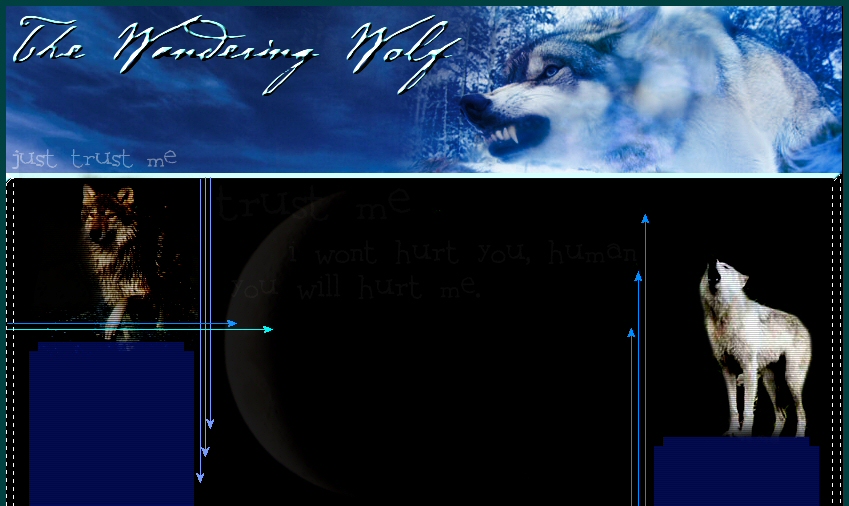

.: The Wolves :.
.: WSC Animals :.
.: The Cub :.
.: The Handwriting
.: My ABCs
.: The Basics
.: Googlism of Jade
.: The Pictures
.: The Pets
.: The Quizzes
.: The Art
.: Sister Sites :.

.: The Site :.
.: For A Wanderer
.: Competition :.
.: Contact :.
.: New Guinea Highland Dog :.

Geographic Range: Parts of New Guinea
Status: The current number of NGHDs in the wilds of New Guinea is not known. Because of importation of domestic dog breeds some scientists are concerned that the NGHDs may begin hybridizing with other breeds, or even dingos.
Description: They are usually a golden-red color with white markings on the underside of their chin, on the feet, and at the tip of the tail. THey have a stocky build and are quite powerful.
Height: 15 - 18 inches at the shoulder
Weight: 20 - 30 pounds
Habitat: Rocky habitats of New Guinea
Typical Diet: They are carnivorous, with their main prey being small mammals. One of these prey species is the cuscus, a small nocturnal marcupial.
Similar Species: Australian dingo, domestic dogs
Special Notes:
- NGHDs are also known as New Guinea Singing Dogs
- Wild NGHDs are thought to be nocturnal (active at night). Or crepuscular (active at dawn and dusk
- They bark, whine, howl, yelp and scream. The sounds may be used to communicate, or when in distress. They also communicate through body posture. There are differences in the way the NGHD shows submission - they fold their ears forward and out, or out and down. Neither wolves nor dogs are known to do this.
- New Guinea Highland Dogs were not discovered by the scientific community until the early 1950's
- They have not yet been accurately researched to determine their taxonomic status.
- The first pair brought in to captivity was taken to the Taronga Zoo, Australia, in 1957. They were then known as Canis halstromi, named after Sir Edward Halistrom.
- In 1969 their name was changed to Canis familiaris dingo. This change classified them with the Australian dingo, a sub-species of the domestic dog.
- Many biologists consider these canids to be primitive 'domestic' dogs, while others think they are their own species of wild dog.
- Most domestic dog breeds experience two or more estrous cycles per year. Wolves and dingos have only one cycle each year. The female NGHDs also cycle through estrous one time per year. if the female NGHD is unable to become pregnant, she may have another estroys cycle four to twelve weeks after the first. Also, like the wild canids, their breeding cycle is triggered by environmental cues, unlike most domestic dogs.
- Although uncommon, they are sometimes kept as household pets. They are recognized as a breed by the United Kennel Club. They may be difficult to house because of their great jumping and climbing abilities. Their loud calls may upset nearby neighbors, and their wild nature is present throughout their lives.